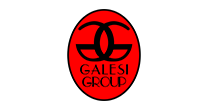News
October 9, 2017Report: Region’s MFG Sector Evolves, Chemical MFG Is Sector’s New Largest Employer
The Center for Economic Growth (CEG) released a report that highlights how the Capital Region’s manufacturing sector has evolved, noting that the sector is larger and economically more impactful than it has been in years. The report identifies chemical manufacturing as the region’s new largest manufacturing subsector in terms of employees – a position previously long-held by machinery manufacturing.
The full report report from CEG can be read on its website. Andrew Kennedy, president and CEO of CEG, revealed this information at Mohonasen Central School’s Center for Advanced Technology Manufacturing Month celebration this morning.
“The Capital Region is home to the sites, resources, talent and infrastructure that continue to attract world class companies,” said Kennedy. “The manufacturing sector is no different. Players such as GlobalFoundries and Regeneron recognize that connections to the universities, government and other companies in our region are worth further investment. As the manufacturing sector grows and prospers, so does the rest of the region.”
Manufacturing employment throughout the Capital Region last year climbed to 33,888 – up 19.7 percent from 10 years earlier. That increase was largely driven by the chemical manufacturing and computer and electronic product manufacturing subsectors. As employment in the manufacturing sector has increased, its impact on the regional economy has also grown. In fact, the CEG report notes that manufacturing wages in 2016 totaled $2.53 billion, up 25 percent from 2007, when adjusted for inflation (2016 dollars).
“In the last 10 years we’ve grown from 170 people to over 2,000, increased our capacity 5 fold, and launched 5 therapeutics,” said Dan Van Plew, Executive Vice President and General Manager, Industrial Operations and Product Supply, Regeneron. “Unless you have lived through this, it is hard to appreciate how difficult it is to grow a high tech business this rapidly. It takes a tremendous amount of talent and resources to do what we have done, and the Capital District was able to deliver. In fact, in 2016, more than 60% of our new hires were from within the region.”
With the Capital Region’s extensive higher education environment, the manufacturing industry is positioned to sustain its growth by leveraging its access to hundreds of graduates each year. CEG’s report outlines the institutions and degrees that continue to fuel this upward trajectory.
“With a distinguished history of innovation in teaching and research spanning nearly two centuries, Rensselaer Polytechnic Institute empowers the chemical, pharmaceutical and materials manufacturing industries in the region” said Rensselaer Dean of Science Curt M. Breneman. “This is why the laboratories and executive suites of most regional and national chemical manufacturing companies are populated by Rensselaer alumni.” “In addition, Rensselaer faculty members frequently partner with major companies including GE, Albany Molecular Research, Regeneron, Schenectady International and many others to create the technologies and products of tomorrow.”
Brooke Manrique, Vice President Global Human Resources & Communications at SI Group: “The Capital Region has been home to SI Group for over a century, and with good reason. What makes our region so appealing is the ability to not only innovate, but to scale to global reach, making it a very attractive market for private industry and job seekers alike. At SI Group, we understand that innovation relies on individuals who possess the knowledge and skills to keep up that innovation momentum. And so it’s no surprise that the Capital Region is home to world-class academic institutions feeding the necessary talent pipeline.”
Scott Dansey, SABIC’s Selkirk site manager: “SABIC’s Selkirk plant is part of a diverse and growing specialty chemical manufacturing segment in Albany and surrounding counties. The site employs over 500 highly skilled people in all aspects of making and delivering high quality plastic resins and chemical intermediates to customers around the world.”
Chemical, machinery, and computer and electronic product manufacturing, accounted for 40.5 percent of all manufacturing jobs throughout the region in 2016. However, other sizeable subsectors in terms of employment include fabricated metal product manufacturing, paper manufacturing, and food manufacturing.
Click here to read the report.


























